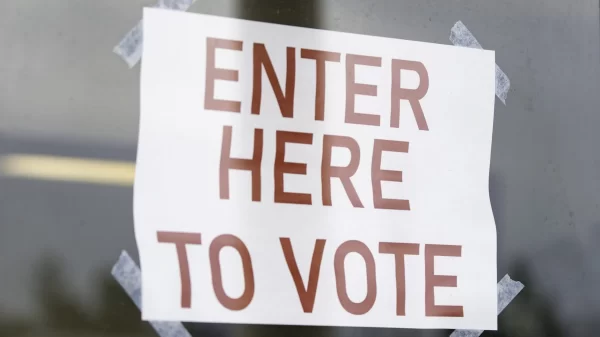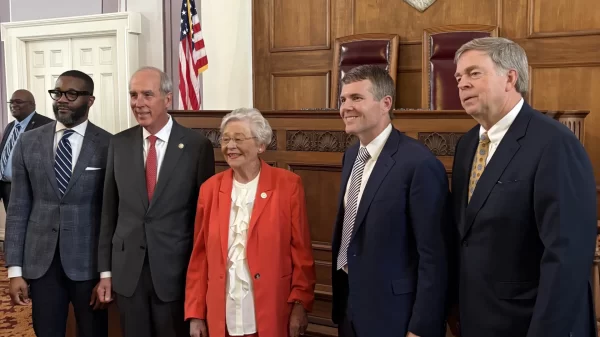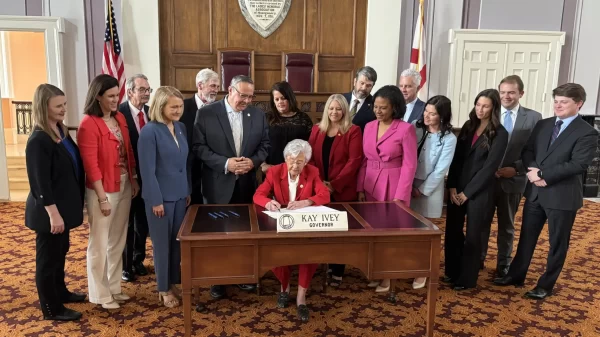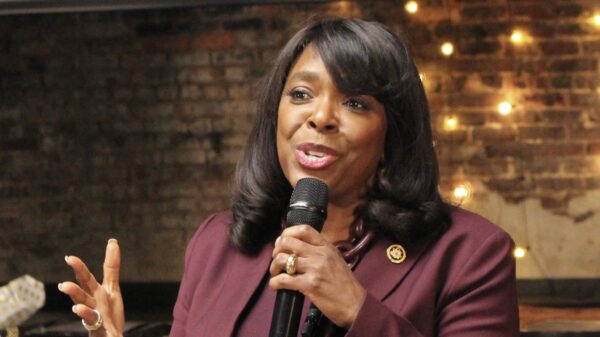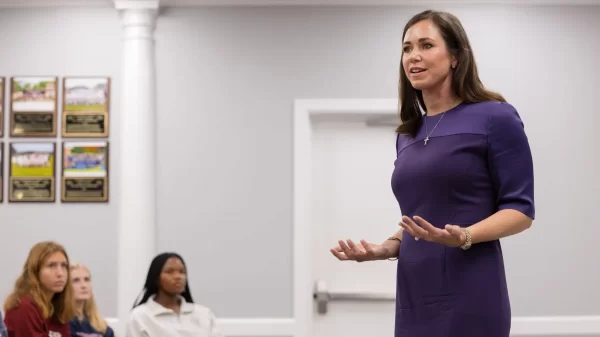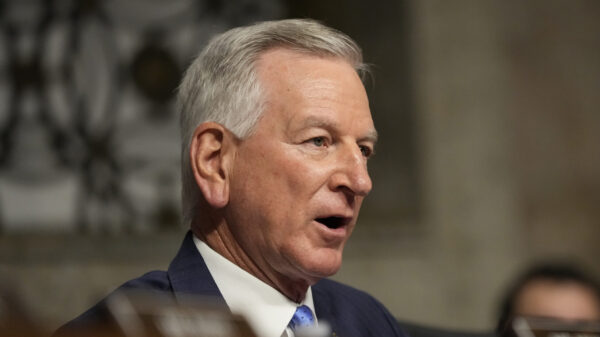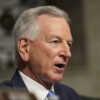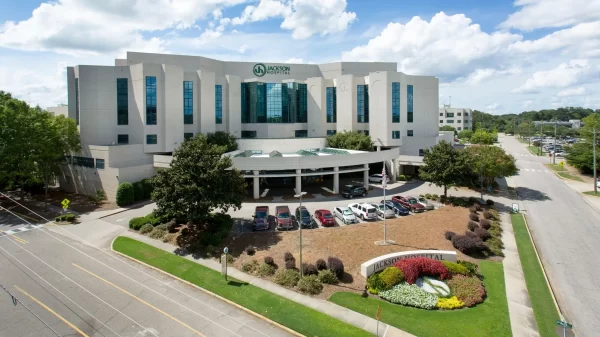Alabama has the lowest percentage of fully vaccinated residents in the nation, and the highest percentage of COVID-19 tests that are positive, a sign public health experts use to measure the spread of the virus.
Those two troubling markers are driving Alabama’s surging cases and hospitalizations statewide, according to health experts who are pleading this week with the public to get vaccinated.
“It is raging through the community, and it is a lot more contagious than the variants we’ve seen before,’ said Dr. Sarah Nafziger, vice president of UAB Hospital Clinical Services, speaking to reporters Thursday about the more contagious delta variant.
The delta variant made up 46 of the UAB lab’s last 47 samples sequenced. Where the original COVID-19 strain could take between 5 and 15 minutes of exposure to contract, public health experts believe it can take between 5 and 10 seconds of exposure to the delta variant to contract the virus.
Nafziger said Alabama’s positivity rate is highest in the nation, which is a factor in the state’s surging cases and hospitalizations. The state’s seven-day average for percent positivity on Wednesday was 21.5 percent, according to the Alabama Department Public Health.
{{CODE3}}
There were 1,272 COVID-19 hospitalizations statewide on Thursday, a 513 percent increase since July 1 and a 237 percent increase over the last two weeks. Of those hospitalized on Thursday, 27 were children, 345 were in ICU’s and 136 were on ventilators, according to Don Williamson, president of the Alabama Hospital Association.
{{CODE2}}
The state added 2,730 new confirmed cases on Thursday, the highest number of daily cases since Jan.29.
{{CODE1}}
“The big unknown is how those case numbers are going to translate into hospitalizations,” Nafziger said. “We don’t know that for a fact, but what we’re seeing over the last week or two is very alarming to me.”
Modeling by UAB’s Dr. Suzanne Judd predicts that, based on the current rate of cases and hospitalizations, Alabama could double the number of hospitalizations during the last surge, reaching 8,000 by August, AL.com reported. The state could add 5,500 deaths by October.
“You can’t plan for that,” Williamson said of the projected hospitalizations. “If it happens, we do whatever we have to do, but that’s twice what we had before, and we almost couldn’t make it work.”
COVID-19 patients are trending younger than they were earlier in the pandemic. In December, the average age of COVID-19 hospitalized patients was 65, Nafziger said, Today, they average 55. It’s a reflection of the greater percentages of older Alabamians who are vaccinated compared to younger people.
While 73 percent of Alabamians aged 65 to 74 are vaccinated, just 54 percent of those between 50 and 64 are. Among those aged between 30 and 49, just 37 percent are vaccinated, according to ADPH. Across all ages just 34.2 percent of Alabamians are fully vaccinated, the lowest percentage in the U.S., according to the Centers for Disease Control and Prevention.
“The people who are in the hospital who have COVID, almost every single one of them did not get their vaccine,” Nafziger said, noting that about 97 percent of Alabamians hospitalized are unvaccinated.
Masks have been important throughout the pandemic, Nafziger said, but “it’s probably more important now than it was in the past.”
That’s because of the infectiousness of the delta variant, Alabama’s low vaccination rate and breakthrough cases the CDC reported earlier this week, where vaccinated people are contracting COVID-19, Nafziger explained. She asked the public to get vaccinated to help put an end to the pandemic.
It’s because of that new data on breakthrough cases and delta that the CDC said on Tuesday the agency had updated mask guidance recommended that vaccinated people in areas of “high” or “substantial” COVID-19 transmission wear masks when in public indoor settings and that all teachers, staff and students older than two in K-12 schools wear masks regardless of vaccination status.
All but six Alabama counties are considered at high risk of COVID-19, with four deemed substantial risks and just two considered moderate risks, according to the CDC, which makes the distinctions based upon the rate of cases per 100,000 residents.
The Alabama Department of Public Health on Thursday announced the department is recommending that all in schools wear masks. The state has no mask mandate, however, so the decision on whether to have students and staff mask up is left to local school systems. Gov. Kay Ivey has said several times recently that she was against mask mandates, and no such order would be coming again.
“ADPH and CDC guidance will ensure that school administrators and school nurses have the best health information to mitigate the spread of #COVID19 in school districts throughout Alabama,” ADPH said in a tweet.
“We have the end to this pandemic in our hands. We’ve had it since December, and it came in the form of this vaccine,” Nafziger said.
Paul Betz, chief operating officer at DCH Health Systems, in a press conference Thursday called on the community to help the three-hospital system by getting vaccinated, as hospitalizations of COVID-19 patients are quickly increasing.
Betz said for weeks DCH was caring for 10 or fewer COVID-19 inpatients. On Thursday the hospitals had 65 hospitalized with the virus, a 200 percent increase, and said “90 plus” of those patients were unvaccinated.
“We are in the process of bringing back online temporary ICU rooms to prepare for what we think is coming,” Betz said.
Betz echoed Nafziger’s comments on the low percentages of younger Alabamians who are vaccinated.
Throughout the pandemic, those aged 25 to 49 who were hospitalized with COVID-19 at DCH hospitals and who were either discharged or died totaled 17.8 percent of all COVID-19 hospitalizations there, Betz said.
In the last 30 days, that number for the age range of 25 to 49 has risen to 28 percent. We’re all falling short and the fight against COVID-19, yet the strain on our healthcare system and community is largely avoidable,” Betz said.
Betz made a call for help with the system’s nursing shortage, announcing an incentive plan seeking to encourage nurses in the community to work at DCH.
“We are quickly approaching a very difficult situation and need help from the community,” Betz said.


